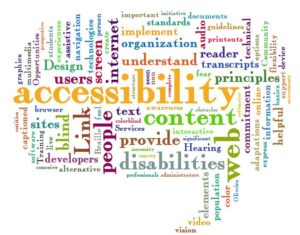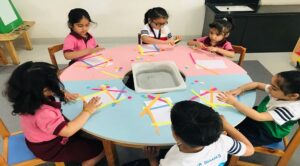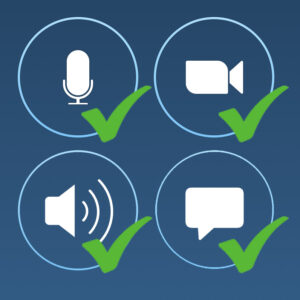After having a discussion on this topic, I personally think that the sudden change to online learning may exacerbate already-existing inequalities. Due to the digital divide (unequal distribution and access to technology) and the consequences of a global pandemic on diverse socioeconomic and racial groups, many students will be disproportionately impacted by the switch to remote work. This requires teachers to consider pedagogical concerns as being inseparable from logistical and technological ones. Creating an inclusive pedagogy that prioritizes fair access to the learning environment requires taking into account all the variables that might have an impact on a student’s performance. Access to the learning environment for all people is one issue that needs special attention. Given the swift change in learning environments, how can faculty and instructors guarantee that all students have access to the materials they need to succeed in the course? So, In order to ensure that all learners may succeed, it is critical to investigate trends in equality and access as more students rely on digital resources for their education.

While teaching online, I need to prioritize the requirements of the students as much as I would with face-to-face instruction when I’m thinking about installing or utilizing digital resources in my classroom. When developing content, I must take into account the knowledge, expertise, and learning preferences of my students, as well as their access to technology and areas of interest.While planning this To be more effective, I must make sure to use a range of strategies. To make studying more approachable, we will try to incorporate a variety of textual, audio, and visual cues. Because some students can feel more at ease using particular methods than others, I must also offer a wide range of opportunities for them to demonstrate and apply what they have learned. For example, some students feel bored while doing the same activities, and most of the students do not like doing discussions. So, I planned different activities to make learning more interactive.

I have to think about how I can help all students succeed when teaching online courses, whether they are delivered entirely online, partially in person, or both. For in-person classes, inclusive techniques involve creating inclusive learning environments where students feel valued and included, outlining specific requirements for coursework and deadlines, and ensuring that the learning and evaluation are approachable and relevant to all students. When in-person classes are canceled and learning shifts to online spaces and methods, these ideas can still be applied, but access and equity can look very different in online teaching contexts, and become increasingly complicated when students are no longer on-campus. Transparency, accessibility, and adaptability are essential components of inclusive teaching and learning that can be addressed when applied to online learning environments.
Transparency
Students can be encouraged to learn and can achieve better success if the justification for instructional decisions is made clear to them. However, the added difficulties of distance learning make it even more crucial to be aware of concealed expectations and curricula that we can take for granted. As a result, we must be careful not to assume anything about what our students already know or are capable of. Transparency is emphasized in inclusive techniques by setting clear, mutual expectations for both students and teachers.
Accessibility
Students who are expected to work from home might not have access to reliable, high-speed internet connections or cutting-edge software and hardware, or they could have to share devices and bandwidth with parents or siblings who are also working from home. Data plans for students who rely on mobile devices can be exhausted or run out before the conclusion of the semester. Unfortunately, due to state and local rules, community-based facilities like libraries and coffee shops that we might have wanted to recommend to students are probably no longer open. Remote instruction might be particularly challenging for kids with disabilities.
In my course, when preparing for online teaching, I USED A QUESTIONNAIRE TO CONTACT STUDENTS such as:
CONTACT STUDENTS such as:
In case we need to switch to the internet, do you have dependable internet and a computer at home? In case we need to use Zoom or another video conferencing solution, does your computer have a camera?
Do you have any accessibility requirements for me about online teaching, such as the need for readings in alternative formats, conversation transcriptions, certain discussion board strategies, or a preference for video discussion over discussion boards?
Flexibility
Working with students’ diversity in a variety of ways is a key component of equitable and inclusive education. Right now, that entails taking into account all of the different ways that their lives are impacted. It is crucial to be as adaptable as possible as I become used to the new standard of distance teaching and learning. To do this, I need to change the way I approach teaching. For example, I might balance synchronous and asynchronous tools and course materials so that students have multiple access points, refocus on active learning strategies, offer multiple options for assessment and evaluation, and give students some latitude to meet deadlines within reason.
In the context of online and blended learning, various ethical and social considerations are essential, in addition to accessibility and equity. Social connections between students may be impacted by online and blended learning. To overcome feelings of isolation and stimulate collaborative learning, it is important to develop a sense of community and meaningful relationships. Long-term use of technology for learning can cause digital addiction and distraction, which have a negative effect on student’s ability to concentrate and their general well-being. It’s critical to strike a balance between screen time and other endeavors. Moreover, global viewpoints and cross-cultural interchange can be fostered by connecting students and educators from other countries through online learning. But it’s critical to approach this discussion with consideration for various cultural norms and beliefs.
